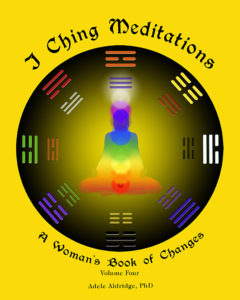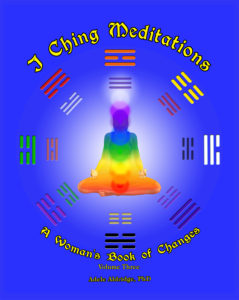Earlier this month I posted about the Chinese New Year and how I thought it related to Hexagram 49, Revolution. I just came across an article called, Revolution and the I Ching, Hexagram 49 Reflections by Laura Annawyn Shamas on a site called mythopoetry.com
In her article she covers a history of the I Ching as well as Hexagram 49.
I include here a just few excerpt from Laura’s article and suggest you go to the link to read her full discussion.
“A legendary, imprisoned king who leads a revolt. Fire in the middle of a lake. The hide of a yellow ox. A “proper day.” Talk of revolution that circles three times. A tiger. A panther. These are the key images of Hexagram Forty-Nine of The I Ching or Book of Changes.1 This hexagram is connected to the concept of animal moltings; as a symbol, it embodies socio-political revolution, personal transformation, and ever-shifting life cycles.”
In her article Laura Shamas includes historical background for the I Ching, hexagram 49 and some comments about Carl Jung’s interest in the I Ching. At the end of her article Shamas writes her Reflections on Hexagram 49.
“The sacred text of the I Ching’s Hexagram 49 contains vibrant insights about the organic nature of revolution and its sequential phases. The hexagram shows that primal forces are at great odds in a revolution’s beginning, as in the image of two quarreling, competing sisters whose interests finally diverge. The fire in the middle of a lake helps us to visualize how revolution exists: its powerful, crackling flames are reflected in the water that surrounds it; its light and smoke touch the celestial plane. No revolution starts without a reason; you cannot decide to create a social or political movement. It happens organically. Timing is part of a revolution’s success. A good leader must change herself or himself first: personal transformation is part of the political, as is shown through the figure of King Wen.
The phases (including pitfalls) of a revolution and its process are embodied in Hexagram 49. Once a revolution is birthed, it must be “bound with the hide of a yellow ox,” in order to have laid the foundations necessary for it to proceed successfully, such as commitment and allegiance. The revolution will launch on the “proper day,” a time of brilliance. A setback: The purpose of the revolution may be explained “three times,” as in a charm or spell. It is in threes that magic happens in fairy and folk tales. Do not proceed until the goals are clearly articulated, repeated, circulated. Regret will vanish when the goals are clear. A great leader changes like a tiger whose stripes are obvious even from afar; her or his sincerity is visible to all. When the revolution ends, everyone must change—this time, like the panther. Eras evolve; a new stability must come after revolution. Hexagram 49 infers that revolution has the ability to “enlighten,” since it is “brilliant” on its “proper day,” and has a fire association.
The I Ching is called Book of Changes; Hexagram 49 describes the specific changes in Revolution, whose purpose is “to establish the new. The new should be better than the old.”45Legge’s translation says revolution “is believed in only after it has been accomplished. There will be great progress and success. Advantage will come from being firm and correct.”46″
While I have included a fair amount of excerpts from Dr. Shamas’s article, there is a lot more. The article has scholarly notes throughout and I recommend it for anyone relatively new to the I Ching.
 Laura Annawyn Shamas, Ph.D., writes non-fiction, and for theater and film. Her Ph.D. is in Mythological Studies. Details about her 2012 book POP MYTHOLOGY: COLLECTED ESSAYS may be found on her website. http://laurashamas.com/index.html
Laura Annawyn Shamas, Ph.D., writes non-fiction, and for theater and film. Her Ph.D. is in Mythological Studies. Details about her 2012 book POP MYTHOLOGY: COLLECTED ESSAYS may be found on her website. http://laurashamas.com/index.html
Tags: Carl Jung, Chinese, Hexagram 49, I Ching


